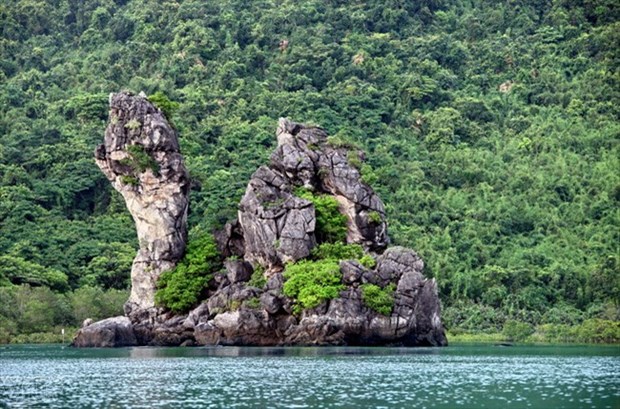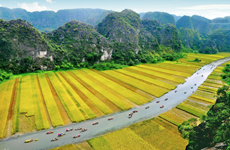Quang Ninh enjoys potential for forestry tourism development
The northeastern province of Quang Ninh has a lot of advantages to develop forestry tourism in addition to marine, cultural and spiritual tourism, according to experts.
 Located within Bai Tu Long Bay and near the UNESCO-recognised Ha Long Bay, Bai Tu Long National Park is a natural treasure for Vietnam. (Source: VNA)
Located within Bai Tu Long Bay and near the UNESCO-recognised Ha Long Bay, Bai Tu Long National Park is a natural treasure for Vietnam. (Source: VNA)Quang Ninh (VNA) – The northeastern province of Quang Ninh has a lot of advantages to develop forestry tourism in addition to marine, cultural and spiritual tourism, according to experts.
The locality is home to Yen Tu National Forest, Dong Son-Ky Thuong Natural Conservation Area, and Bai Tu Long National Park. All are valuable natural resources to develop forestry tourism.
According to scientists, Yen Tu forest is home to a wide variety of animal and plant species, including 830 kinds of plant, of which 38 have been recognised as valuable and rare such as erythrophloeum fordid, teakwood, textured wood and pedocarpus fleurgi.
Yen Tu also has a rich fauna, of which 23 species have been recorded on Vietnam’s Red book for their scarcity.
Covering an area of over 2,600 ha, of which over 1,700 ha is natural forest, Yen Tu is not only a well-known tourist attraction, but also a centre of Vietnam’s Buddhism.
Meanwhile, Dong Son – Ky Thuong natural conservation area has been known for its diversified biodiversity value on a vast land.
The area is abundant with flora and fauna. It has 1,163 species of woody and herbaceous plants and 224 species in four groups of birds, animals, reptiles and amphibians, including 51 rare and specious species of flora and fauna which are in Vietnam’s Red Book and one in the World’s Red Book.
Located within Bai Tu Long Bay and near the UNESCO-recognised Ha Long Bay, Bai Tu Long National Park is a natural treasure for Vietnam.
Formed on June 1, 2001, the park covers 15,783 hectares, of which forests and forest land make up 6,125 ha on more than 40 islands, and water surface accounts for 9,650 ha.
It is home to 1,909 species of fauna and flora, including 72 types of animals and 30 kinds of plants listed in Vietnam’s Red Book of endangered species./.













